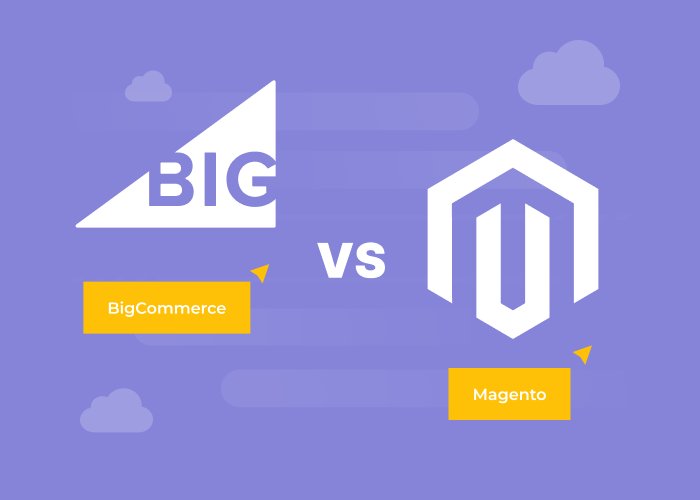Content
Building a Successful E-commerce Team Structure: Where to Start
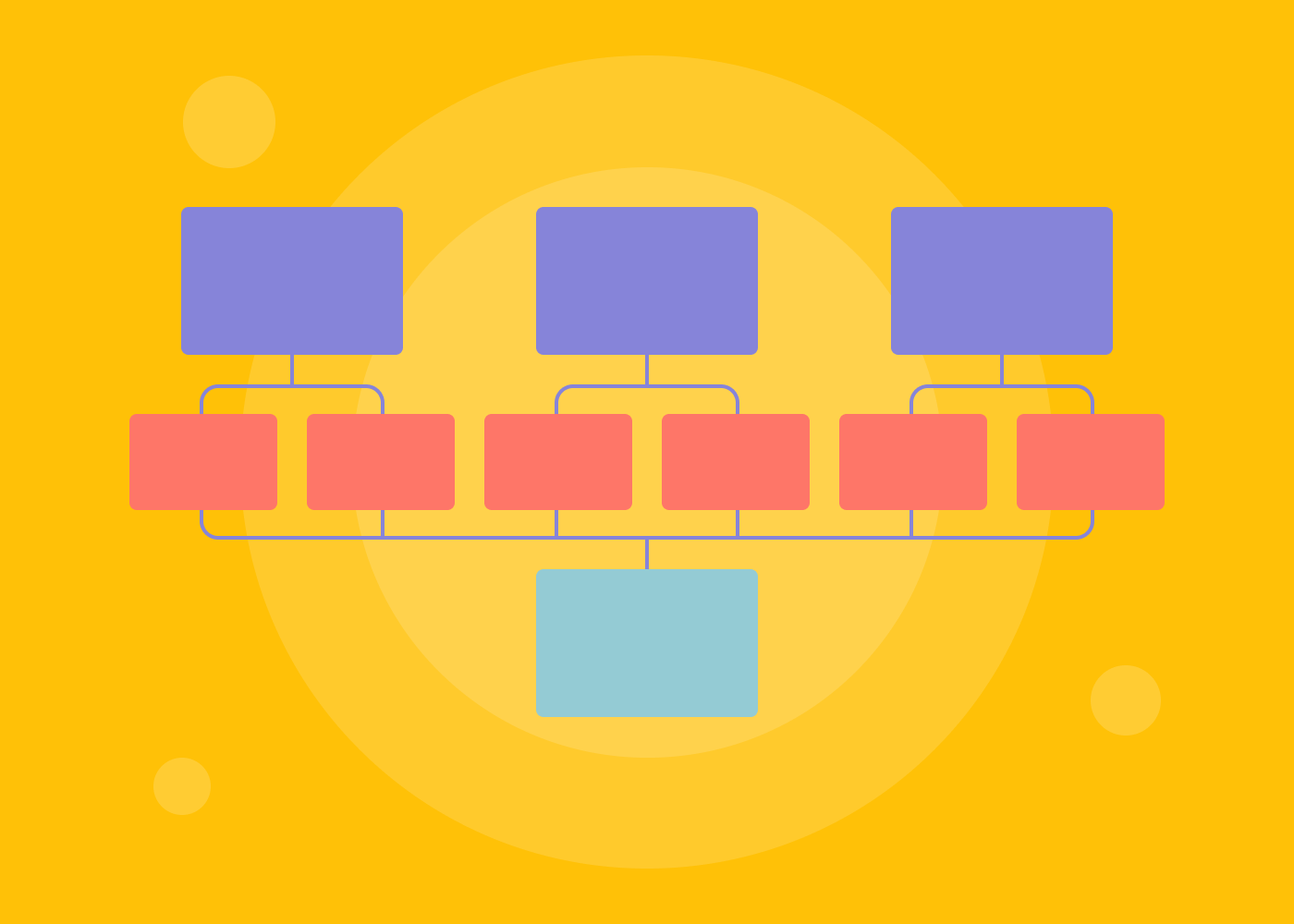
Time to read: 15 minutes
E-commerce is the fastest-growing retail market segment, and entrepreneurs ranging from traditional brands to online startups are looking to capitalize on the digital gold rush.
While e-commerce provides ample opportunity for growth, it requires human resources and infrastructure. A scarcity of talent, poor speed, and a lack of agility are the biggest challenges when building an e-commerce team. A business needs to properly understand how to build a team to succeed in the digital space.
We are going to share the best e-commerce team structure models with you. Each company is, of course, unique, but sticking to a particular model will benefit any type of business. Ready to get started?
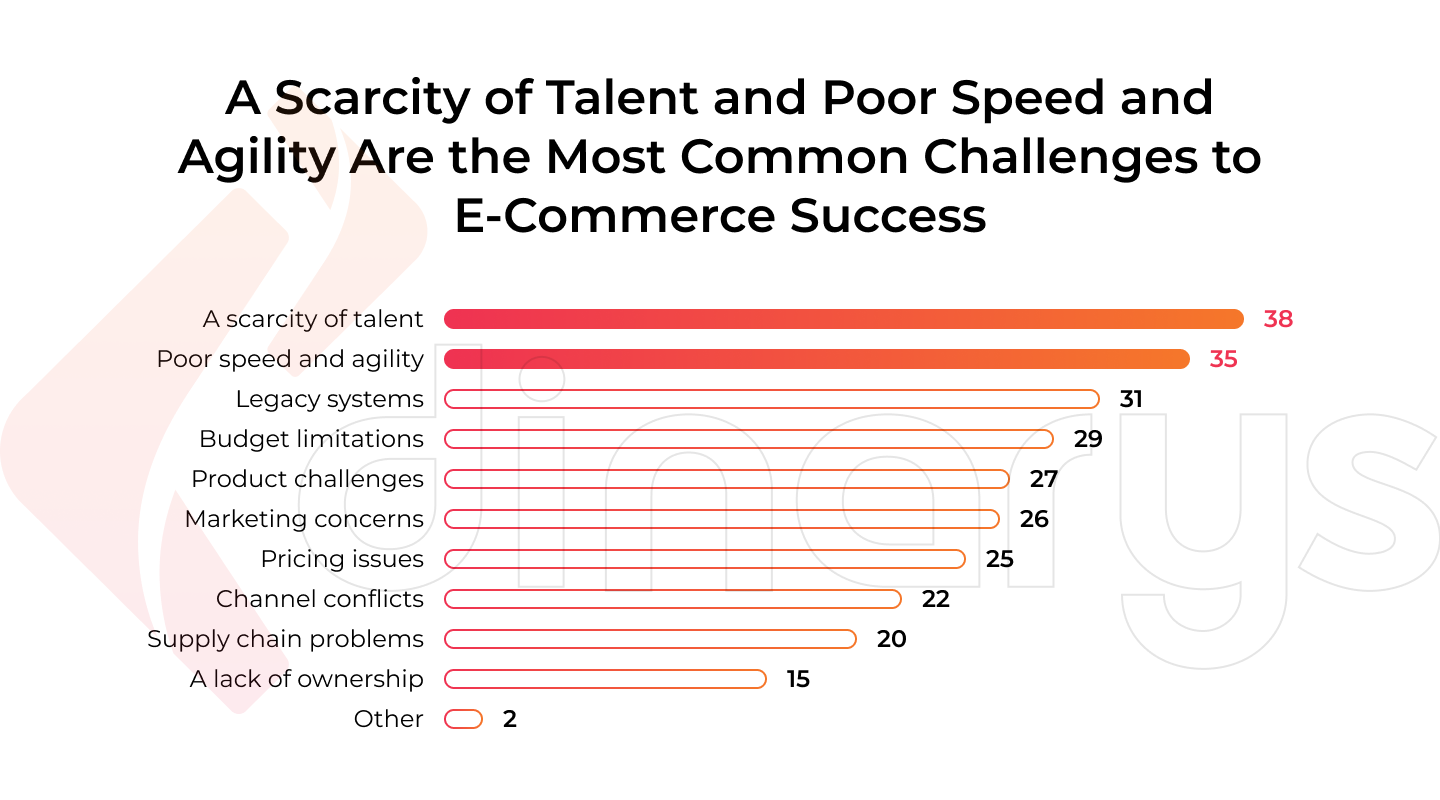
E-commerce Company Structure: Six Models
To develop an effective e-commerce solution, it is vital to create a business management structure. Furthermore, as the business grows, the team needs to expand, which means it is essential to allocate resources properly to avoid making mistakes in this challenging endeavor. Some e-commerce project management structures are suitable for specific types of business. Here are six of the main ones.
Functional structure
With a functional structure, the organization is divided into separate elements, such as production, marketing, and finance, each of which has clearly defined and specific tasks and responsibilities. Compliance with the instructions of each functional body within its competence is mandatory for production units. Decisions on common issues are made collectively.
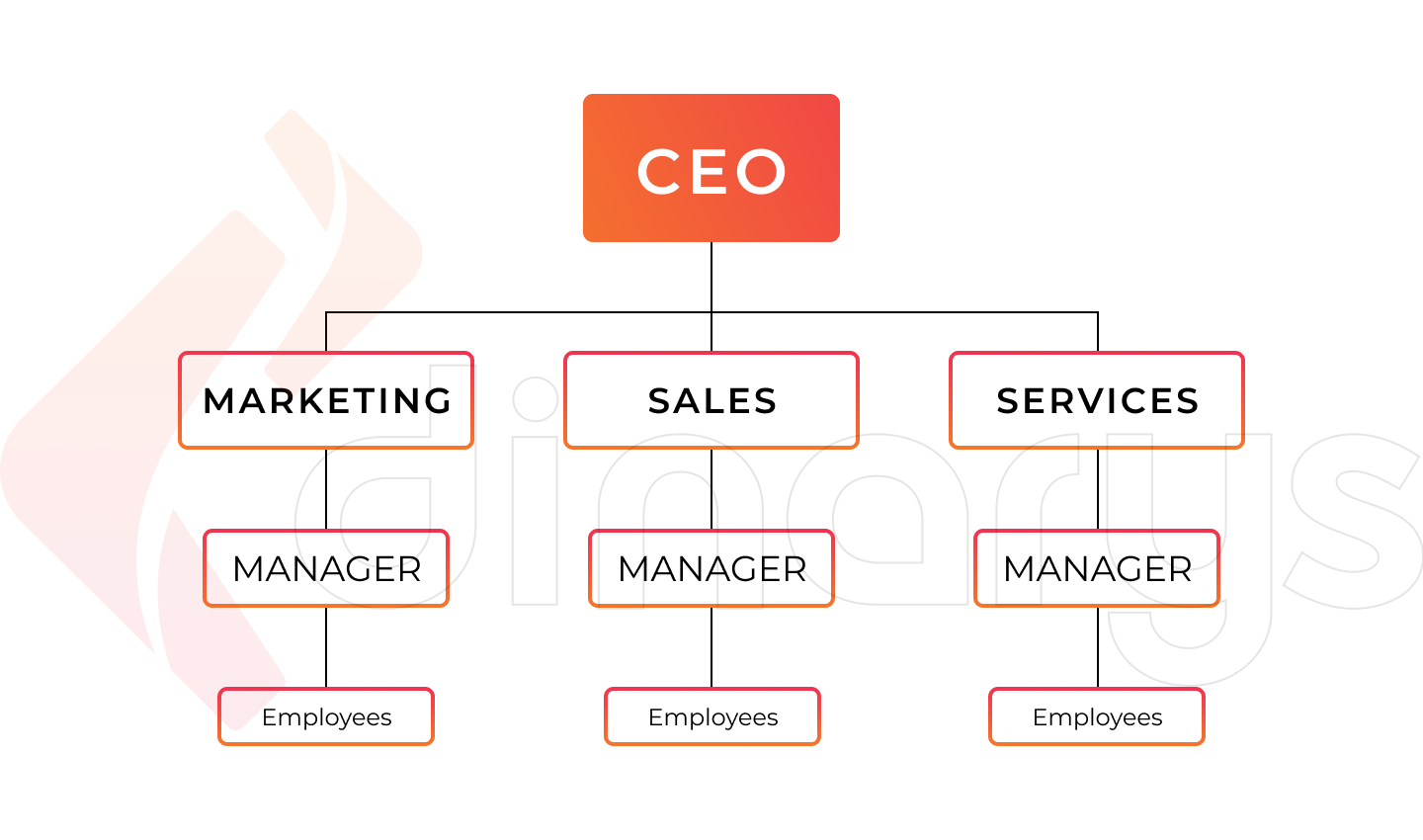
The functional specialization of the management apparatus significantly increases its efficiency. Instead of universal managers who must understand all functions, a staff of highly qualified specialists appears. In addition, the functional structure aims to perform constantly recurring routine tasks that do not require prompt decisions.
Flat structure
Many e-commerce solution companies do not like the hierarchical nature of the functional team structure. Instead, they choose a flat e-commerce structure, characterized by a reduction in management levels. A flat (sometimes also called horizontal) organizational structure minimizes levels in the management hierarchy. Simply put, this is a structure with little or no middle management.
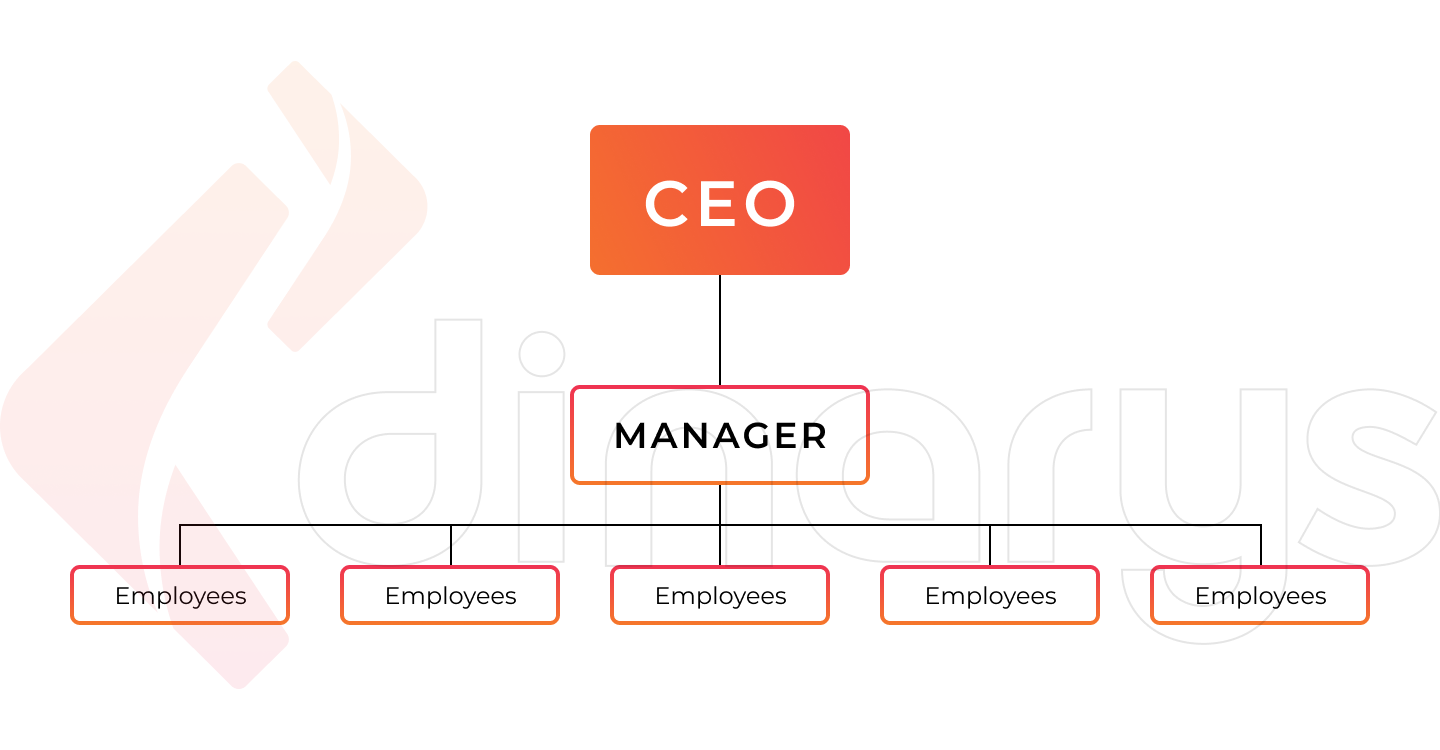
With a flat structure, all employees are close to the management. This reduces the number of levels a message must go through to reach its recipient, making communication more efficient. In addition, by reducing the number of levels of management, a flat structure eliminates some intimidation of lower-level team members relative to higher levels of management.
Lets talk about itHave a project in mind?
Geographic (regional) structure
This type of structure is suitable for teams that work in several cities or even countries. This type divides labor within the company along geographical lines. A distinctive feature of the geographical organizational structure is the division of the company’s business operations into regions. This type of organization allows each branch of the structure to make decisions based on the unique supply and demand needs that each location faces.
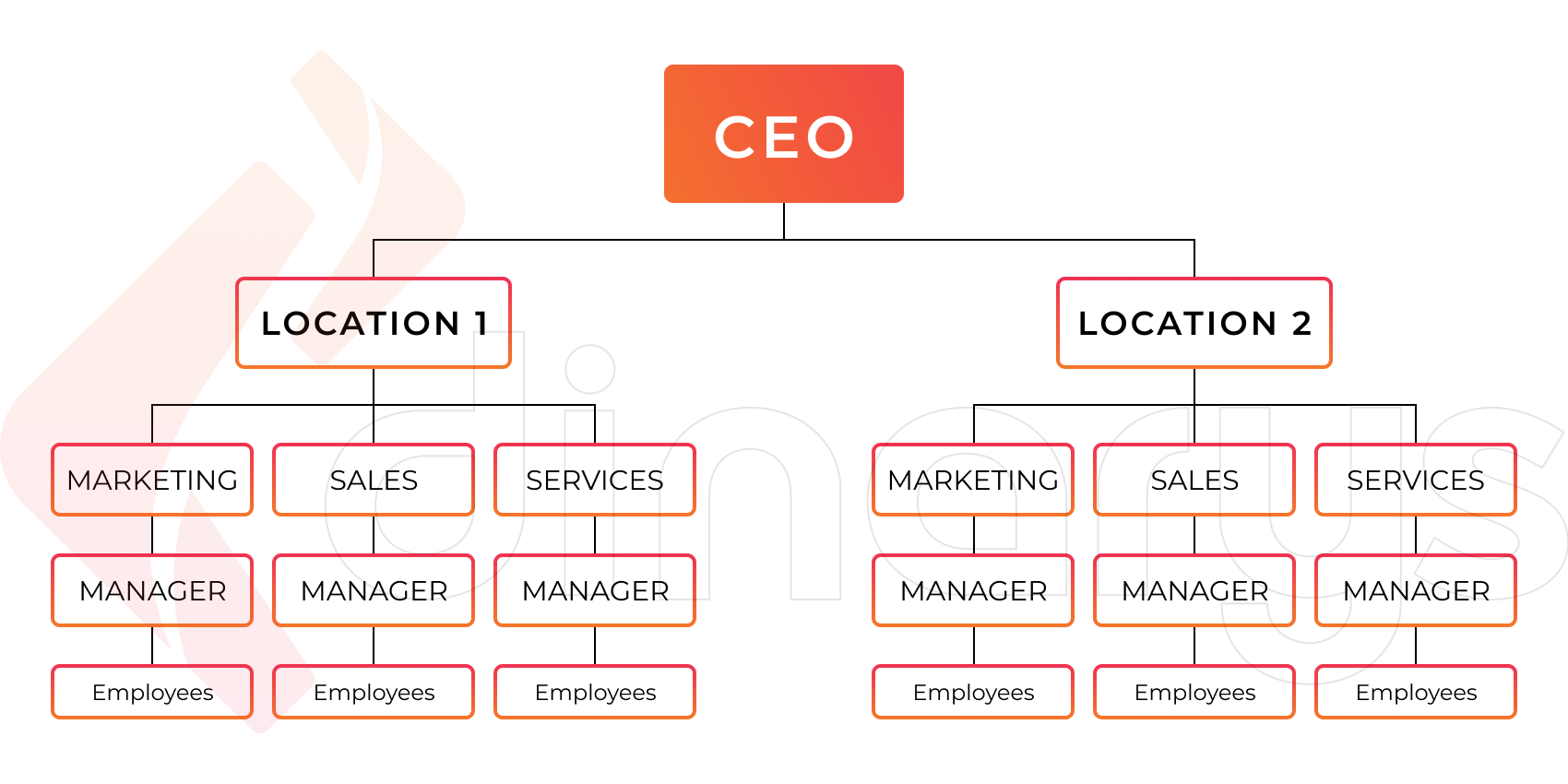
For example, a location in a low-traffic area may decide to build a larger marketing team. Businesses can use a geographic structure if they have multiple storefronts in a city, a franchise in a state, or a multinational company operating in countries around the world. With the geographical approach, it is vital to organize the management structure correctly so that each part consults with the others and makes decisions as a unit.
Product-based structure
This is an enterprise management structure in which management functions are distributed based on separate products or services, products, or services that the company provides. This allows each employee to become an expert on the particular product line they are assigned to. For example, a clothing company might separate its employees into adult and children’s clothing departments. This structure is most popular among large enterprises that sell various products. However, when used in a small business, it can help small teams focus on product development to bring new products to market faster.
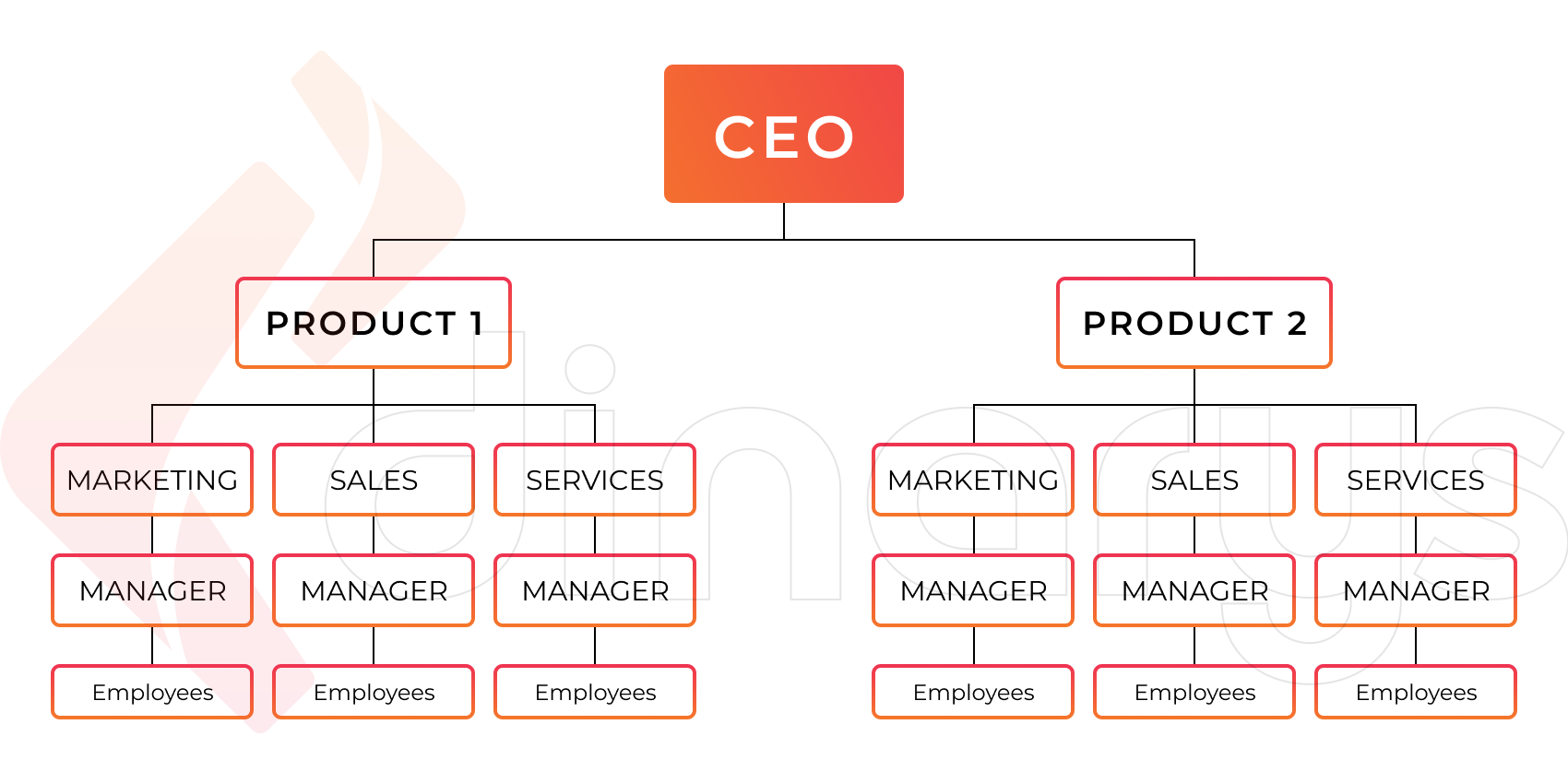
Market-based structure
This type of team management is similar to product-based. However, instead of creating departments based on products, the organization creates departments based on the business’s audience. For example, individuals, other small businesses, and governments may be audiences and potential clients for a web design business. Different marketing methods will work best for each audience, so the company will create divisions.
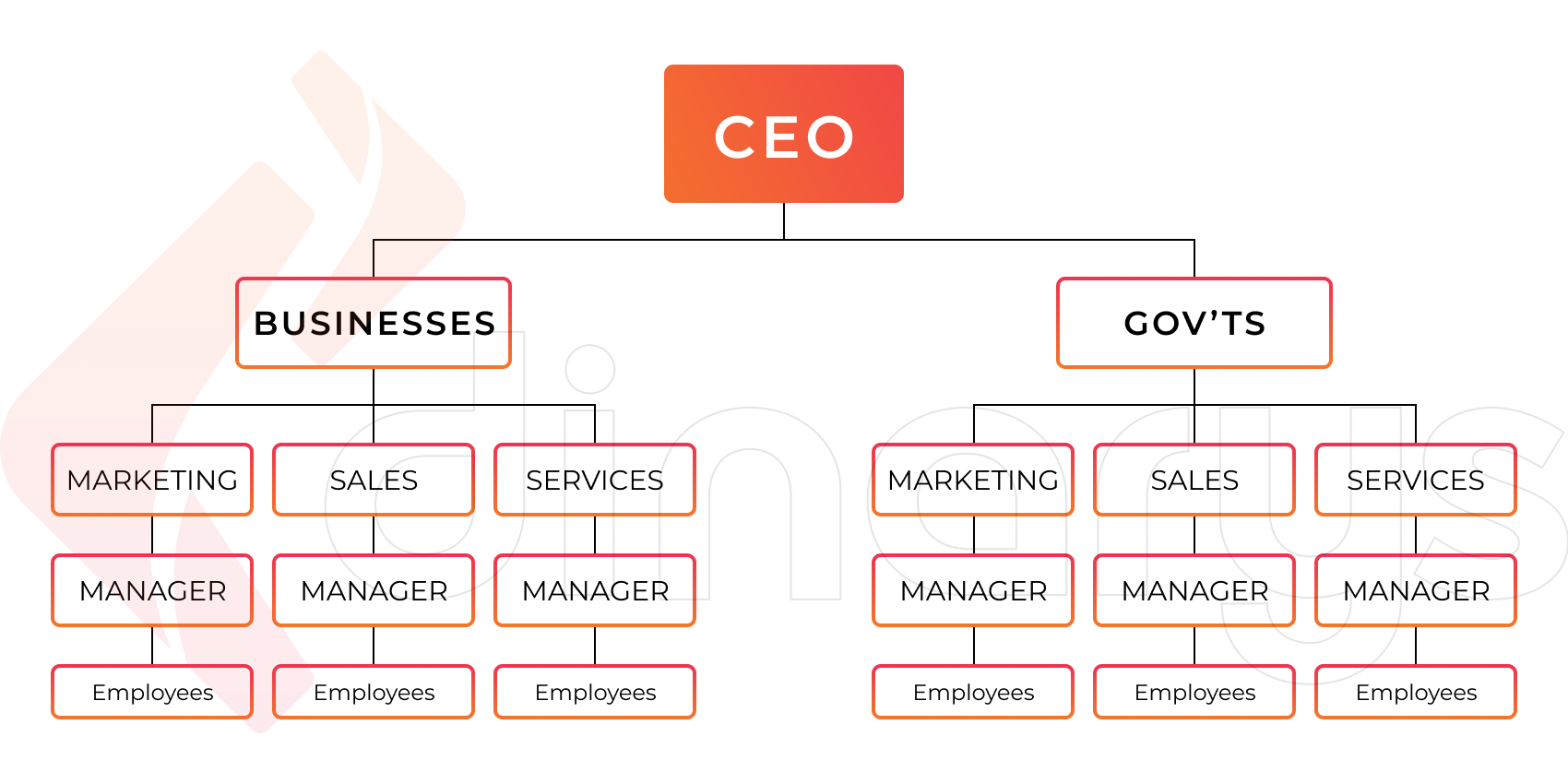
The main disadvantage of this structure is that each branch can start having too much autonomy and not enough communication. As a result, marketing practices may unintentionally weaken those of other markets, and some processes may be duplicated, ultimately wasting time.
Process-based structure
A process-based structure is similar to a functional structure in many ways. Workers are divided according to their company roles, such as research and development (R&D), marketing and sales, and order fulfillment. Each role unit has a hierarchy that includes entry-level workers and management. The main difference is that a process-based structure more clearly describes how different departments should interact. Specifically, this type of structure creates guidance for moving the product around the company.
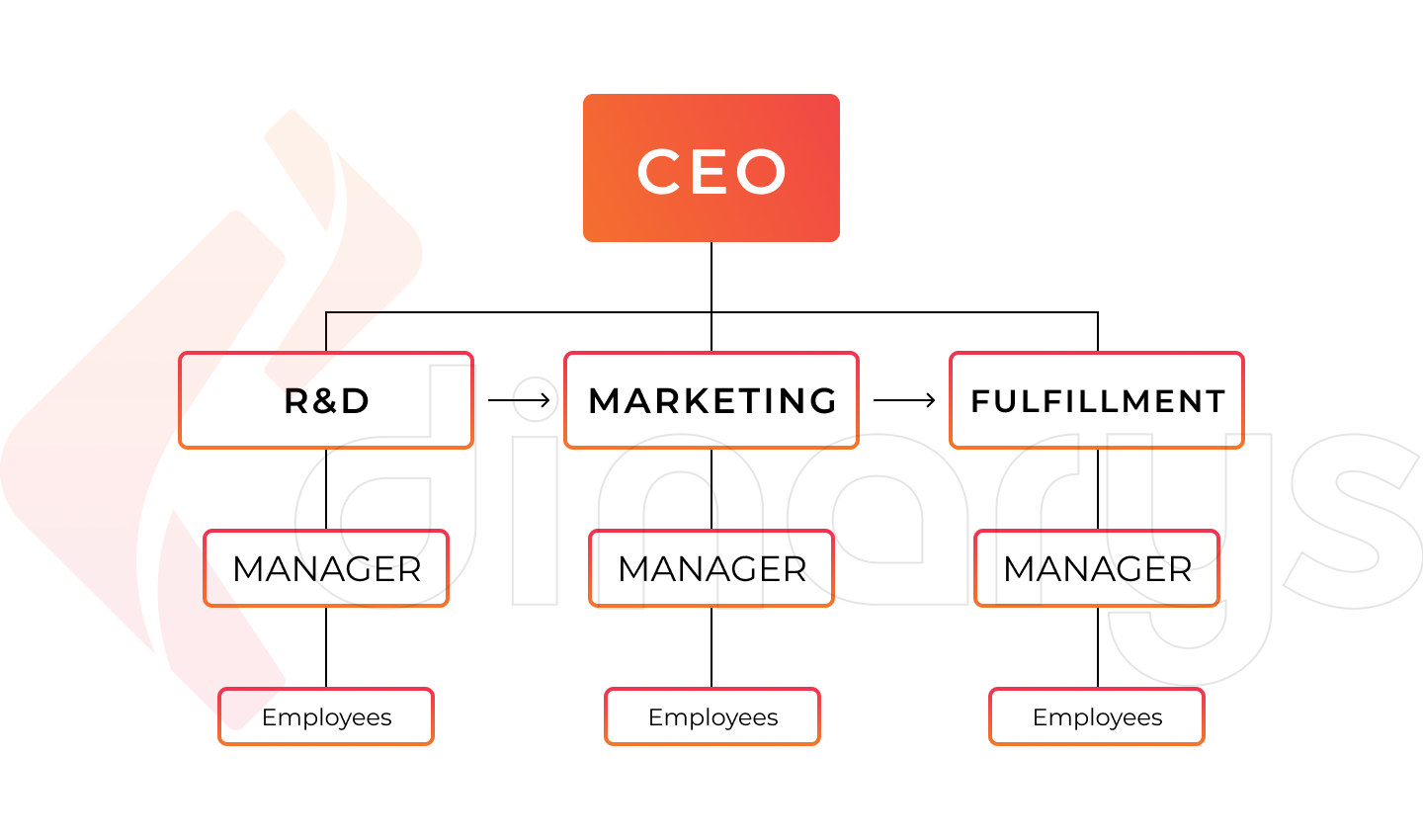
For example, when the R&D department completes their work, the process-based structure dictates that they then turn their work over to marketers and salespeople, who then inform the order fulfillment team of the order to be filled. This type of structure helps to increase the speed and efficiency of the business. However, its main drawback occurs when employees are not familiar with the system: They can transfer work and messages to the wrong people, disrupting the smooth workflow.
Ultimate E-commerce Team Departments
To succeed in the competitive e-commerce market and keep your website, online store, and e-commerce business running smoothly, you need a diverse e-commerce team made up of key players with specialized skills. As you build your e-commerce solutions team, it’s imperative that you bring in top-notch talent in each of the core areas described below.
E-commerce management team
The management team includes positions responsible for maintaining and optimizing the e-commerce company’s website (and other sales channels) so that it can sell products online.
These people are responsible for various aspects of online operations, business planning, and marketing strategies. The e-commerce manager provides an in-depth analysis of market trends, brand awareness strategies, insights into increasing online sales, and ways to improve customer acquisition and retention.
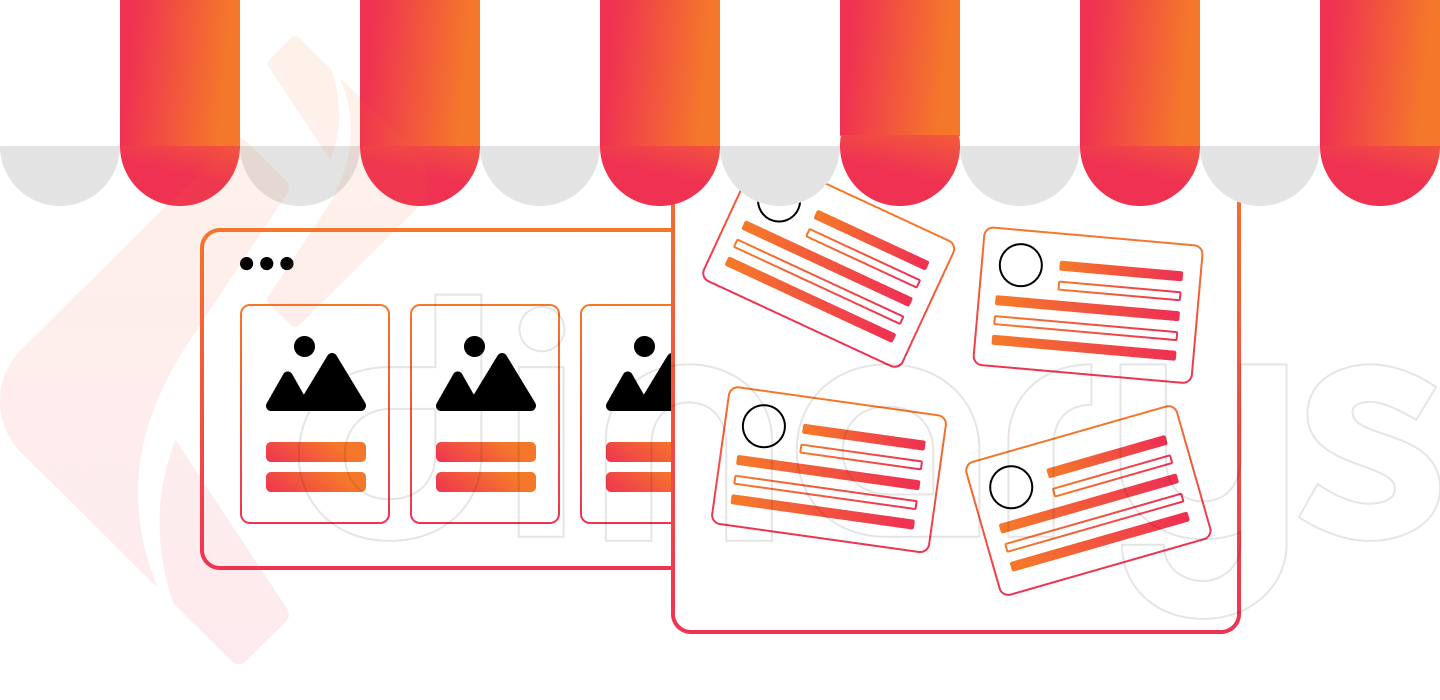
The job of an e-commerce management team is to oversee the e-commerce functions of a business in all its various forms, from bringing people into a store to turning visitors into repeat customers. It includes the following responsibilities:
- Managing the website and online store
- Controlling digital marketing strategies
- Setting goals for the team
- Setting the company up for success
- Determining the pricing strategy for e-commerce products
- Communicating with suppliers
- Forecasting demand (especially during holidays)
- Monitoring sales performance
Lets talk about itHave a project in mind?
Depending on the size of the business, the functions of an e-commerce manager can vary in scope. For smaller operations, the management team will need to have extensive e-commerce experience because they will wear many different hats and will be more likely to manage day-to-day e-commerce tasks.
For medium to large e-commerce businesses, the management team will focus less on the day-to-day and more on improving sales performance, scaling the business, implementing new sales channels, improving strategies, and managing the team.
Development team
For companies that make digital products, the development team is the unit all processes revolve around. Depending on the size of the project and the business’s ambitions, an e-commerce company has two options for interacting with developers: outsourcing or building an in-house team. You can read more about the pros and cons of each option further below.
As we mentioned before, the development team bears the heaviest responsibility for the project’s success. They are the ones who create the brand image on the web. Developers are in control of not only how the solution looks and feels but also how convenient it is from a practical point of view: Customers should be able to freely place an order and pay for it, while web store owners and operators should be able to freely manage all the inner processes, such as inventory management. In most cases, the construction of such a solution is an entire science that requires data-driven decisions and an understanding of various trends in e-commerce development.
Profound knowledge of the technologies involved in the project is a must for developers, as is an awareness of the business side of the development process. Developers should understand what customers currently expect from their shopping experiences.
In sum, the development team works on two fronts: visual and functional. Only by bringing them together will the business achieve high conversion rates.
You may also like the following article: TOP Tips to Choose a Web Development Company
Business analyst team
Business analytics serve as the backbone of software development. Business analysts are in charge of market and business domain research and make decisions about issues such as how to approach a project, how custom it should be, what additional features will be required, and how to arrange them in the best possible way.
Moreover, business analysts link stakeholders and the development team, translating business needs into direct actions.
Let’s take a look at the core functions of the business analyst team in more detail:
- Analyze profound business prerequisites. Business analysts collect business data and investigate the current business workflow to proceed with decisions for the future.
- Identify business growth opportunities and project scope.
- Unify the software development process. All product-related parties should work in a coordinated and coherent manner.
Project management team
A project management team is a group of specialists responsible for delegating project tasks and delivering timely results for a given project. Such specialists should be good at communicating and even possess certain diplomatic skills to ensure stakeholders’ satisfaction and help developers find a common language and unite into a “dream team.”

Marketing team
The primary goal of the marketing team is to promote the name of a company, product, or service. Its composition can be quite diverse, depending on the particular needs of the e-commerce development company.
Here are some essential activities that the majority of marketing teams conduct:
- Competitor analysis. Along with business analysts, marketing experts can engage in this activity, bringing another perspective. Marketers research competitors to figure out how they position themselves in the market and look for advantages the company can have over rivals.
- Social marketing. Social media gives merchants extensive freedom to promote their products and services and reach out to their target audiences.
- Email marketing. Even though social media and multiple messengers have stepped on the toes of traditional channels of communication, like email, marketers are still reluctant to give up on them completely. Email marketing helps companies make direct contact with customers and inform them about upcoming discounts or other events they might be interested in. Moreover, email marketing works well to decrease shopping cart abandonment.

Learn more about how to automate your Magento email marketing in this article.
Sales team
The sales department is where communication with a client begins. Sales representatives are a driving force of the company’s earnings. This is what their main objectives and responsibilities include
- Generating leads.
- Building an ideal customer profile and acting in accordance with it.
- Negotiating with prospective and existing clients.
- Coordinating sales activities with other teams.
- Preparing reports on clients’ preferences and pain points.
- Driving continuous improvement through feedback.
Human resources (HR) team
The focus of this department is primarily on the establishment and maintenance of a company’s inner processes that relate to employees. In other words, the main goal of the HR team is to provide staff with a friendly workplace culture.
The HR department, like any other, can consist of multiple representatives, such as human resource director, people partner, HR manager, and recruiter. Each carries out different functions, but generally, the work of the HR team includes the following activities:
- Recruiting candidates
- Onboarding newcomers
- Processing company payroll
- Creating and improving company policies
- Managing staff records
- Ensuring employee engagement and retention
Lets talk about itHave a project in mind?
Seven Golden Rules of Employee Retention
Among the HR department’s responsibilities is retention. However, it is their responsibility alone. Any successful e-commerce merchant should place great emphasis on its employees. After all, they are the people who transmit business values and generate profit for the company.
The following rules can be quite useful for business owners who appreciate their people and want to retain top workers to form the best e-commerce business team structure.
-
Express your gratitude through above-average salaries.
-
Allow employees to take initiative.
-
Encourage input and feedback.
-
Avoid micromanagement.
-
Invest in the most talented performers.
-
Provide opportunities for growth.
-
Offer flexibility.
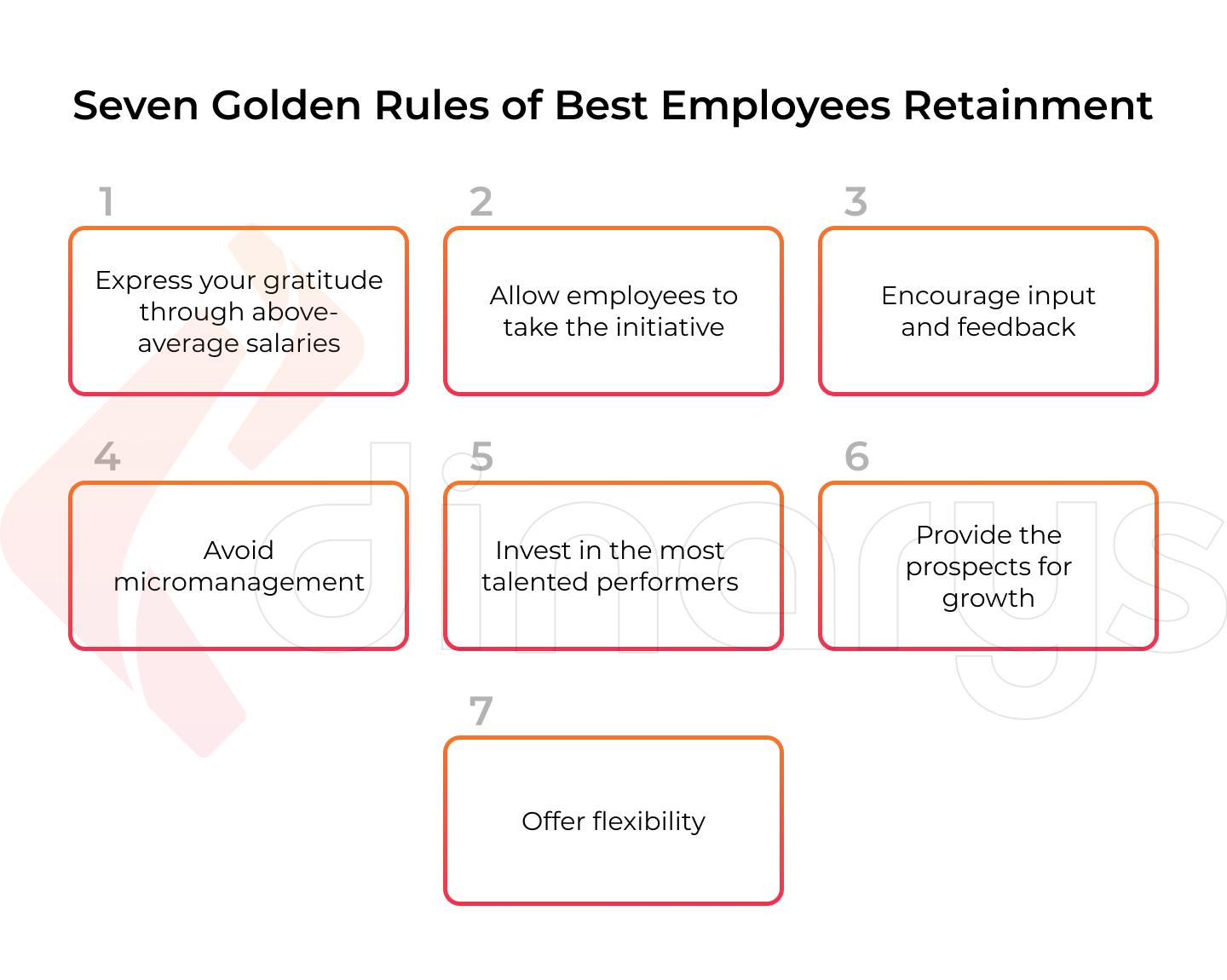
Outsourcing vs. In-House: Pros and Cons
When it comes to another project, many business owners face a challenging decision: outsource the vendors or build an in-house team? Let’s briefly consider the advantages and disadvantages of both options.
Outsourcing
Outsourcing is the recruitment of third parties not available in your organization to enrich the expertise. Why do many organizations opt for outsourcing?
Advantages of outsourcing:
- Timely deliveries. Usually, outsourcing companies, like Dinarys, have well-structured and perfected processes that enable them to complete projects on time.
- Cost efficiency. When someone hires third-party developers, they pay only for the time the developers spend on their projects, eliminating downtime expenses.
- Professionalism. Companies that specialize in outsourcing services value their reputations. The risk that you will have to deal with negligence is very low.
Disadvantages of outsourcing:
- Less control. As outsourcing companies serve several different clients, they can be less dedicated than an in-house team.
- Potential communication gaps. Since third-party experts are not entirely immersed in your company’s atmosphere, misunderstandings could arise.
- Security concerns. When dealing with a hired team, you will have to provide them with private business information. Make sure your vendors realize the importance of confidentiality.
In-house team
In-house recruitment means that you hire full-time specialists, focused solely on the tasks of your company. What benefits does the business receive from building an in-house team?
Advantages of an in-house team:
- More control and trust. You can control the activities your employees engage in. Additionally, there shouldn’t be any trust issues, as your in-house employees will pursue a common goal.
- Good communication. In-house workers are familiar with your company workflow, which improves the understanding of what results they need to achieve and the collaboration between departments.
- Your own talent pool. Having your own talent pool, you will be able to attract future employees.
Disadvantages of an in-house team:
- The possibility of additional expenses and time. Hiring a full-time team may take time and generate extra expenses as you onboard employees. Also, you will need to invest in tools like computers and other office equipment.
- The possibility of wasted resources. Sometimes, businesses experience downtime. During this period, you will still have to pay your workforce, even if you don’t have tasks for them.
- A lack of novelty. It’s a controversial disadvantage, but you should still take it into account. Long-term collaboration with the same team can deprive you of fresh ideas.
Conclusion
Having the best e-commerce team structure is an integral part of any successful project. People and their skills and talents should matter the most for any online entrepreneur. In this article, we discussed six models for building an e-commerce business team and their key players.
You also learned about different approaches to recruitment: outsourcing and in-house. If you decide on outsourcing, the Dinarys team will gladly offer our assistance. We have 7+ years of experience in outsourcing and know all the ins and outs of this approach. Contact us if you have any questions regarding our workflow or if you have a project in mind that you want to entrust to us.
Let professionals meet your challenge
Our certified specialists will find the most optimal solution for your business.


